
Math Workshop makes differentiating instruction seamless. If you want to learn more about the framework for Math Workshop, please read this post first.
As students work through their M.A.T.H. rotations, they have the opportunity to work on activities that are just right for them. One of the rotations where personalized learning can be maximized is the At Your Seat rotation. During this rotation, students complete a variety of differentiated independent math activities at their seat, or in a place where they can focus around the room.
At the beginning of a new unit of study, At Your Seat activities can mainly be a review of skills introduced during the previous unit. As the unit goes on, more of these activities should be related to skills from the current unit. This boosts student success, and provides opportunities for enrichment and deeper understanding. Also keep in mind, the At Your Seat activities used to review and reinforce skills from the previous unit of study are perfect forms of assessment.
Here are five ideas for practice activities you might have your students engage in during the At Your Seat rotation of Math Workshop.
Give your student practice with calculating basic operations, and solving equations that are directly related to the mini lesson taught that day.
In my classroom, the practice books provided by our math adoption, EnVision, are used for computation checks. During the At Your Seat rotation, students spend the first five-or-so minutes completing a computation check.
They then check their work for accuracy by peeking at the answer key I have available near my small group area. On days when I am mingling around the room to have one-on-one needs-based conferences, students know they can come have their computation check looked over by me for accuracy. In this case, I record their level of understanding on my Math Workshop Data Tracking Sheet based on our Levels of Understanding rubric.
Give your students practice with solving complex problems that incorporate the skills they’ve learned.
Rather than giving students more routine computation practice, focus on providing them with tasks that require the transfer of skills they have learned to demonstrate a deeper understanding. In my classroom, we use Word Problem Solving Task Cards, which are specifically designed to help students apply math concepts to solve complex word problems. Each task requires students to utilize problem solving, reasoning, critical thinking, and precise modeling skills.
Problem solving tasks are a wonderful way to differentiate At Your Seat activities. Providing a selection of task cards to choose from boosts student independence, and engagement. Try incorporating a challenge option each day for students who are interested in applying what they know to solve more advanced, complex problems.
In addition to providing different problems to choose from, you can also differentiate Word Problem Solving Tasks by providing students with different tools for recording their answers. Some students may need a formatted recording sheet with a step-by-step checklist to walk them through solving complex problems. Others may benefit from a formatted recording sheet without a checklist, while some advanced students may feel comfortable with recording a detailed model and explanation on a blank journal page.
Give your students the opportunity to apply a variety of math skills to solve multi-step problems that connect to real world situations.
You may want to think of Performance Tasks as mini projects that can be completed in one or two At Your Seat Sessions. You can differentiate your Performance Tasks by having students work independently, with their Math Triads, or with a group or partner assigned specifically for the duration of that task.
Give your students the opportunity to engage in long-term projects that incorporate math skills alongside cross-curricular skills.
When selecting or designing a math project, take time to think about how your math unit can connect to the other content you will be teaching at that time. Science and social studies content works well with math, so I always suggest using those as a foundation for project inspiration.
For example, when I taught second grade, we studied adaptations & life cycles at the same time we learned about place value. Therefore, it made sense to design a project that combined those two units of study (Place Value In The Wild). Later in the year, our social studies unit about geography, mapping, and coordinate grids coincided with our arrays & multiplication unit, so we designed an arrays mapping project.
At the end of the school year, students can’t help but daydream about life outside the classroom. This makes it the perfect time of year to do a telling time project that requires students to plan out a schedule for the day of their dreams, and write about all the details of their very special day (Time of Your Life).
Taking the time to think about student interests and student mindset will spark creative ideas in you that help to design engaging projects for your students.
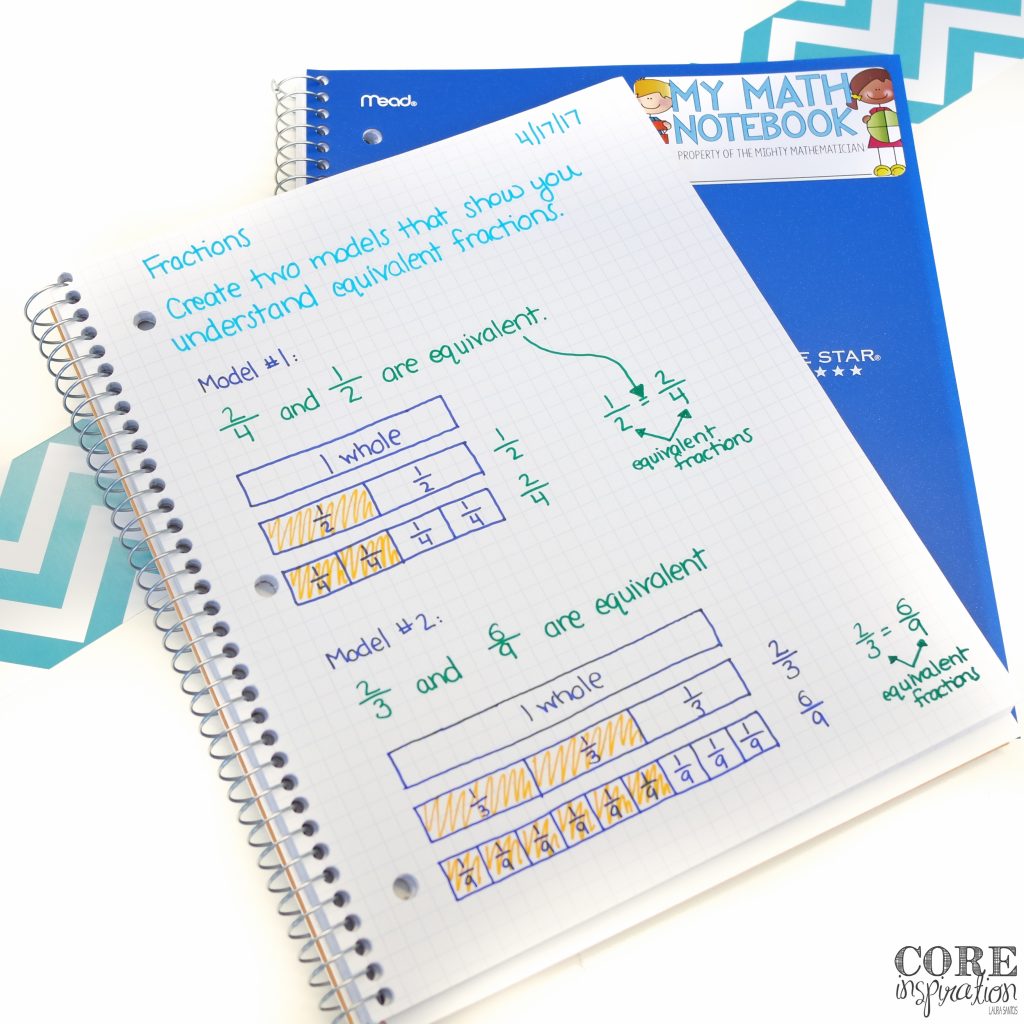
Give your students time to write about their math understanding.
Math journaling can take many forms. Here is a short list of ideas to inspire you.
All the activities above can be used as assessments of student growth and understanding. Providing students with high quality, rigorous At Your Seat activities makes incorporating assessments seamless, and reduces the need for lengthy end-of-unit assessments. For more detail about assessing student understanding and tracking data during Math Workshop, read this post.
If you have other ideas for unique and rigorous At Your Seat Activities, or questions about the At Your Seat rotation of Math Workshop, please share your thoughts in the comments below.
For more details about Math Workshop, check out my other posts about this instructional approach.
If you want to give Math Workshop a test drive in your own classroom, grab your Math Workshop Starter Kit, and feel free to share any questions you have about implementation in the comments below.


I’ve been an elementary teacher for ten years, and love sharing tips and resources that make differentiated learning more manageable for you. Thank you for visiting.
Learn More
Dropping by with weekly tips, classroom strategies, and free content created with you in mind.
Join me and other 2nd through 4th grade educators in the Teaching with Core Inspiration Facebook Group. This is a place to collaborate, ask questions, and learn how teachers like you are using Core Inspiration resources in their classrooms. Hope to see you there!
© 2024 Core Inspiration ∙ Website by KristenDoyle.co
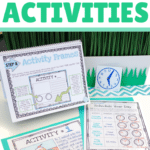
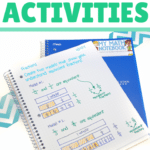
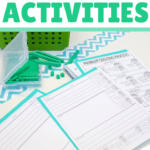
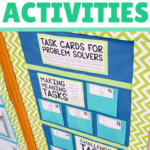
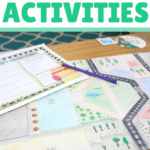
29 Responses
Wow! This is fantastic. I do a lot of conferring and small groups and I am so excited about using your ideas for collecting data during independent work. I love the computation checks! Our school also uses Envisions. Which section of the workbook do you use for your computation checks? Thank you for sharing all your great ideas!
Hi Bethany, thank you for taking the time to comment. I use the reteach page for computation checks.
How long did it take you to create all of the task cards and forms?
Hi Jennifer, each set takes me around 20 hours to create, so something like the year long third grade bundle has about 240 hours of work put into it. Are you interested in getting started with creating resources as well?
I am so in love with how you run things! We are all going self contained next year and I have only taught in a team so I’m trying to get my head around 3rd grade math. You mentioned lots of different activities they can complete at the seat. Do you give them a schedule or assign them as specific task to complete during that section? And if I’m understanding your schedule correctly you have 2 rotations each day for math workshop? Thank you! I’m sure more questions to come 🙂
Hi Meagan, thank you for reaching out. 🙂 Yes, we have two rotations of workshop each day. During the at your seat rotation, I have students work through things in the following order:
1 – Computation Check (usually a few problems from the math workbook that comes from our math adoption)
2 – Project (if we are currently working on one) or Task Cards (if we do not currently have a project in progress)
Is there any advice you can give me on “training” my kids on how to use M.A.T.H. Workshop rotations? How long do you take teach the procedures? What do you do to refocus students who are off task during “At Your Seat” time without it taking away from you and your small group/individual conferencing?
Hi Julie,
I do spend a great deal of time training my students so their independence level is strengthened….anywhere from a month to six weeks at the beginning of the year. I slowly introduce each rotation one at a time…beginning with at your seat, then moving to hands on, and finally to technology.
The longest amount of time is spent teaching how to be independent at your seat (we use the Math Partner Success Kit to help with this).
During this time, I don’t pull small groups very frequently because I work on monitoring on task behavior and take notes on the unique needs of my class to determine the types of behavior/routine lessons they need most during this time.
Although six weeks sounds like a lot of time not to meet with groups, this is the time of year when students are working on back to school routines and an easier math unit (addition and subtraction). I find dedicating this time at the beginning of the year helps us move fast and stay focused throughout the year.
I hope this is helpful. This year, I will take close notes about the process I follow and write a blog post about it. 🙂
Warmly,
Laura
I would like to try this framework to help me differentiate instruction, but I’m having trouble understanding when (in the workshop) do the students actually practice (like a workbook page) what they just learned in the mini-lesson and when is this skill differentiated? (Do you use formative assessments?) Also, what do you do on Fridays in math? I notice that is not on your chart. Thanks for your help!
Hi Cheryl, The students practice their skill using a workbook page during the At Your Seat rotation. This is the first thing they do when they work at their seat as a “must do”. All the other at your seat options introduced in this post at “may do” options. The workbook page from our math adoption is not differentiated – the way I differentiate this portion of workshop is by meeting with a small group as they work on the page, a having one-on-one conference while a student works on a problem, or adjusting the number of problems a student is asked to complete.
This page, along with all the other work being done during workshop rotations falls into my formative assessment category. It would be quite an undertaking to track every single activity students do during workshop each day, so I select one activity per day to record as an actual formative assessment score.
Last year, I was not able to have workshop on Fridays due to schedule conflicts with our specials.
Thank you for reaching out!
Warmly,
Laura
I just want to say that I discovered your blog this summer and have found so many helpful tools and resources!! My team mate and I are interested in using your task cards during our math rotations in second grade. Do your students have a certain amount of task cards they need to complete each day/week? We were thinking of having students do task cards when they are done with the workbook page from our series.
Hi Elizabeth, this is exactly what I do in my classroom when students are working at their seat – workbook page from our series, then on to task cards. Therefore they have about 10 minutes to work on task cards each day. The tasks do take quite a bit of time to complete. At the beginning of the year, I have them submit one per week and boost it up to two by mid year, then three by end of year. I hope this is helpful. 🙂
Warmly,
Laura
Hi there, I need some help on how to teach primary students on probability.
Hi Dee,
Thank you for reaching out. What grade level do you teach?
Laura
Hi Laura,
I am so grateful for the creativity and time you put into your products and explanations. My family might be even more grateful! 🙂 I am using your workshop model and LOVE it. Wondering…..no…. hoping, that you are developing a set of task cards for 4th grade? I think your PBL tasks will be just fine, right?
Thank you Karen! I have been asked several times about fourth grade task cards. I am considering it, but have several third grade projects in line before I begin developing fourth grade content. 🙂 The PBL units can certainly be used for fourth graders.
Warmly,
Laura
Do you do end of topic tests? If so, do you still do math workshop assessment days?
Hi Katrina,
I do end with topic tests and we do not do workshop on those days because I don’t want my students to rush through their assessment to get to their workshop activities.
Warmly,
Laura
Hi Laura,
If you decide to do actual small groups as part of the rotations (therefore, having four “stations”) I am wondering if there are set skills to practice with those kids or if you just work on what you think they need?
Best,
Hi Kristy, I always like to work on what’s needed based on what I see during the mini lesson that day. 🙂
Do you have something similar available for reading workshop? I love this but I don’t have a big enough math block and I’m interested in trying it but I’m reading. Thanks!!
Hi Janet,
I don’t have a full arsenal of resources for reading like I do for math, but I highly recommend the Daily 5 structure if you are interested in giving students different activities to work on within your reading block. I used to use Daily 5 before we adopted the reading workshop structure at our site, and I used this transition deck to keep us organized, these activities for the work on words portion of the daily 5 block, and these reading rubrics for students’ reading response notebooks. I hope this is helpful as you get started with formatting your reading block.
Warmly,
Laura
Hi Laura,
I teach 2nd grade, so I’m wondering if you have a 2nd grade version of the ‘Math Problem Solving Process’ flip book? I’m looking forward to using your M.A,T.H workshop in my classroom this fall. I’ve been reading through all of your posts (in between tending grandkids) so I’m about ready to start printing and making up all the necessary papers to get prepared.
Hi Diane,
Thank you for reaching out. I used the same problem solving process when I taught second grade. Have fun getting ready for the school year and spending time with family this summer. 🙂
Warmly,
Laura
Hello! I am a first year teacher and love the resources you have created. I am going to teach 4th grade and want to use the math workshop model. I plan on purchasing all of your resources I can apply to 4th. I was wondering if you had 4th grade task cards or, if not, could recommend somebody else’s? It’s the one piece of the puzzle I am still missing. I have looked on TPT but couldn’t quite find ones that were like yours. I look forward to using this model next year! Thank you for putting together this blog and making your work available on TPT! They have been so helpful for a new teacher like myself!
Hi Anthony,
Thank you for reaching out so kindly. I am so happy to hear the posts on math workshop have been helpful as you prepare for your first year in the classroom. I do not currently have any enrichment materials for fourth grade aside from the first number of the day binder. This school year, I will be expanding all my resources to include fourth grade – task cards, games, and a second binder. These resources take several months to develop, but I plan to work through each of the fourth grade units, and will have everything complete by the end of this school year.
Warmly,
Laura
I love this math workshop model. I am teaching first grade this year, but know I will have some kids able to do third grade math. I’m excited to try this! Do you have any good resources for first grade? I love this! Thanks!
Hi Mary,
Thank you for commenting. 🙂 The Brown Bag Teacher has great math resources for first grade. 🙂
Warmly,
Laura
Hi,
I’m more curious as to how exactly you incorporate Envision math curriculum into this model. Would you mind sharing how you utilize the other parts of the curriculum please such as the Solve & Share & the videos?